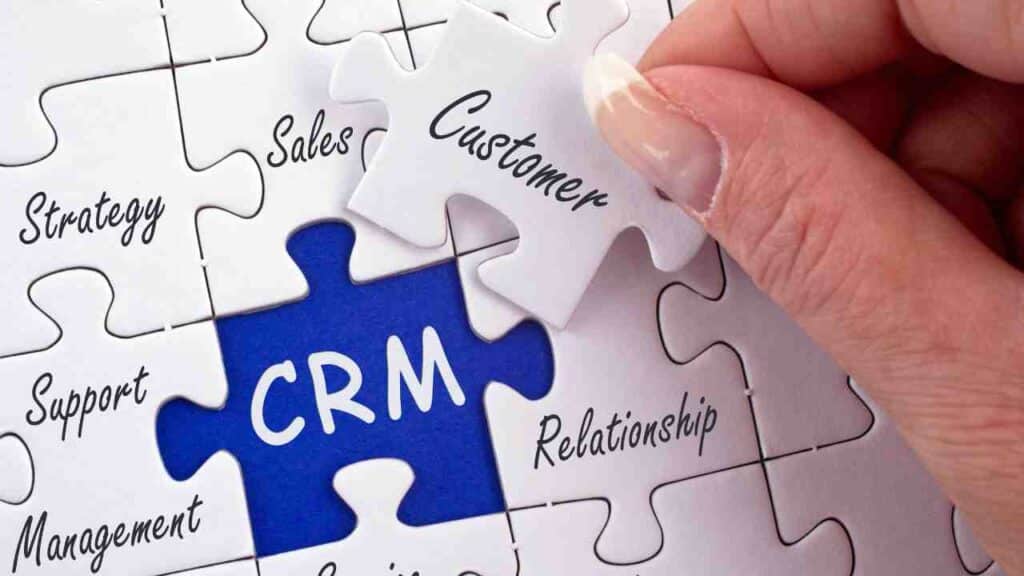Incorporating Advanced Analytics in CRM Data

Customer Relationship Management (CRM) systems have become an essential tool for businesses to manage their interactions with customers. These systems allow companies to store and analyze vast amounts of customer data, providing valuable insights that can drive business growth. However, with the advent of advanced analytics, businesses can take their CRM data analysis to the next level. By incorporating advanced analytics techniques, businesses can unlock hidden patterns, trends, and correlations in their CRM data, enabling them to make more informed decisions and drive better customer experiences. In this article, we will explore the benefits of incorporating advanced analytics in CRM data and provide valuable insights on how businesses can leverage this powerful combination to gain a competitive edge.
The Power of Advanced Analytics in CRM Data
Advanced analytics refers to the use of sophisticated techniques and algorithms to extract insights from data. When applied to CRM data, advanced analytics can help businesses uncover valuable information about their customers, such as their preferences, behaviors, and buying patterns. By analyzing this data, businesses can gain a deeper understanding of their customers and tailor their marketing and sales strategies accordingly.
One of the key advantages of incorporating advanced analytics in CRM data is the ability to identify customer segments. By segmenting customers based on various criteria, such as demographics, purchase history, or engagement level, businesses can create targeted marketing campaigns that resonate with specific customer groups. For example, a clothing retailer can use advanced analytics to identify a segment of customers who frequently purchase winter clothing and create personalized offers and recommendations for this group.
Another benefit of advanced analytics in CRM data is the ability to predict customer behavior. By analyzing historical data and applying predictive modeling techniques, businesses can forecast future customer actions, such as churn, cross-sell, or upsell opportunities. This allows businesses to proactively address potential issues and take advantage of opportunities to maximize customer lifetime value. For instance, a telecommunications company can use advanced analytics to predict which customers are likely to churn and take proactive measures, such as offering personalized retention offers, to prevent them from leaving.
Case Study: Company X
Company X, a leading e-commerce retailer, successfully incorporated advanced analytics in their CRM data to drive business growth. By analyzing their CRM data using advanced analytics techniques, they were able to identify key customer segments and tailor their marketing campaigns accordingly. For example, they discovered that a significant portion of their customers were millennials who preferred eco-friendly products. Armed with this insight, they launched a targeted marketing campaign promoting their eco-friendly product line to this segment, resulting in a significant increase in sales and customer satisfaction.
In addition to customer segmentation, Company X also used advanced analytics to predict customer behavior. By analyzing historical purchase data and applying predictive modeling techniques, they were able to identify customers who were likely to make repeat purchases and those who were at risk of churning. This allowed them to implement personalized retention strategies for at-risk customers and targeted upsell and cross-sell campaigns for high-value customers. As a result, Company X saw a significant increase in customer retention and revenue.
Best Practices for Incorporating Advanced Analytics in CRM Data
While incorporating advanced analytics in CRM data can be highly beneficial, it requires careful planning and execution. Here are some best practices to consider:
- Define clear objectives: Before diving into advanced analytics, clearly define the objectives you want to achieve. Whether it’s improving customer segmentation, predicting customer behavior, or optimizing marketing campaigns, having a clear goal will guide your analysis and ensure you focus on the most relevant insights.
- Collect and clean high-quality data: The success of advanced analytics relies on the quality of the data. Ensure that your CRM data is accurate, complete, and up-to-date. Cleanse the data by removing duplicates, correcting errors, and standardizing formats to ensure reliable analysis.
- Choose the right analytics techniques: There are various advanced analytics techniques available, such as clustering, regression analysis, and machine learning. Choose the techniques that align with your objectives and data characteristics. Consider seeking expert advice or partnering with analytics service providers to leverage their expertise.
- Integrate data sources: To gain a holistic view of your customers, consider integrating data from various sources, such as social media, website analytics, and customer surveys. By combining data from multiple sources, you can uncover deeper insights and make more accurate predictions.
- Continuously monitor and refine: Advanced analytics is an iterative process. Continuously monitor the performance of your models and refine them as new data becomes available. Regularly evaluate the impact of your analytics initiatives on key business metrics and make adjustments as needed.
Get Your FREE 14-Day Trial and Take Your Business To The Next Level with an All-In-One Sales and Marketing Platform for businesses, agencies and marketers.
Incorporating advanced analytics in CRM data can provide businesses with a competitive edge by unlocking hidden patterns, predicting customer behavior, and enabling targeted marketing campaigns. By segmenting customers and predicting their actions, businesses can tailor their strategies to meet specific customer needs and maximize customer lifetime value. However, successful implementation requires clear objectives, high-quality data, the right analytics techniques, integration of data sources, and continuous monitoring and refinement. By following these best practices, businesses can harness the power of advanced analytics in CRM data and drive business growth.
Visit https://SaasExpert.ca – Your All-In-One Sales and Marketing Platform for small businesses, agency owners, and marketers.
Read about “Integrating Advanced Analytics with CRM Data” right here.
Frequently asked questions about Incorporating Advanced Analytics in CRM Data.

What Are the Benefits of Incorporating Advanced Analytics into CRM Data? 🎉
Fantastic question! Integrating advanced analytics into your CRM (Customer Relationship Management) system is like turbocharging a car 🚗; you get more speed, better performance, and a smoother ride. Here’s why it’s a game-changer:
Enhanced Customer Segmentation 🌐
CRM analytics tools can dive deep into customer behaviors, preferences, and past interactions, allowing you to segment your customers into more precise categories. This leads to more personalized marketing and better service delivery.
Improved Decision-Making 🤔
Dashboards and real-time analytics mean you get immediate insights into key performance indicators (KPIs). No more guesswork—make informed decisions, fast.
Sales Forecasting 📈
Ever wish you had a crystal ball to predict your sales future? Advanced analytics gives you the next best thing by employing machine learning and other predictive tools.
Optimized Marketing Campaigns 🎯
Understand which campaigns are performing well, why they’re successful, and how you can replicate this success in future initiatives.
Customer Retention 💖
Uncover hidden patterns in customer behaviour, predict churn, and find out what keeps your customers coming back for more.
So there you have it! The benefits are almost too numerous to count, but they all boil down to this: incorporating advanced analytics into your CRM data helps you understand your customers like never before. And in today’s hyper-competitive business landscape, that understanding is golden. 🌟
How Do I Choose the Right Analytics Tools for My CRM? 🛠️
The market for analytics tools can feel like a candy store 🍭—so many options, how do you choose? Here’s how to make a smart decision:
Assess Your Needs 📋
What exactly do you want to achieve with analytics? Identify your goals first, and then look for tools that specialize in those areas.
Check Compatibility 🔗
Ensure that the analytics tool can seamlessly integrate with your existing CRM software. You don’t want to end up with tech that doesn’t play nicely together!
Ease of Use 🖱️
Choose a tool that is user-friendly. If your team finds it too complicated, they won’t use it, and that’s wasted investment.
Scalability 🌱
As your business grows, your analytics needs will evolve. Pick a tool that can grow with you.
Budget 💰
Don’t forget the financial aspect. Compare pricing plans, and make sure the tool offers a good ROI.
Test, Test, Test 🧪
Most reputable analytics tools offer free trials. Make the most of this to test out your shortlisted options.
Choosing the right analytics tools for your CRM is critical, so take your time. Do your homework, and you’ll thank yourself later. 👍
What Types of Data Should I Be Analyzing? 📊
Ah, the wonderful world of data! 🌍 But not all data is created equal. Here are the types you should focus on:
Customer Demographics 🧑🤝🧑
Age, location, job title, etc., help you get a basic understanding of who your customers are.
Interaction Data 👥
This includes emails, calls, social media engagements, etc., basically, any interaction a customer has with your brand.
Transaction Data 💲
All purchase histories and transactional interactions should be closely monitored.
Behavioral Data 🛒
Track website visits, click-through rates, and other online behaviors to understand your customers’ preferences and habits.
By strategically analyzing these types of data, you can form a 360-degree view of your customers, helping you serve them better and boost your business results. 🎉
How Do I Ensure Data Privacy When Incorporating Advanced Analytics? 🔒
Ah, the all-important question in our data-driven age. Security should never be an afterthought, so here are ways to protect customer data:
Data Encryption 💾
Always encrypt sensitive data, both at rest and in transit.
Access Control 🔐
Limit who has access to what data within your organization.
Regular Audits 🕵️
Consistently audit your data handling and storage practices.
Compliance 📜
Make sure your analytics tools are compliant with regulations like GDPR, CCPA, etc.
By prioritizing data privacy, you not only protect your customers but also earn their trust—a valuable currency in today’s business world. 🌟
Can I Use Advanced Analytics for Customer Retention Strategies? 🤗
Absolutely, yes! Customer retention is cheaper than acquisition, making it a critical area to focus on. Here’s how analytics can help:
Identify At-Risk Customers 👀
Use predictive analytics to spot customers who might be thinking of leaving so that you can take pre-emptive action.
Personalized Interactions 💌
Analytics can help you tailor your communication based on customer preferences and past interactions.
Loyalty Programs 🎁
Use analytics to measure the effectiveness of your loyalty programs and modify them to make them more appealing.
Customer Satisfaction Surveys 📝
Collect and analyze customer feedback to improve your products and services.
Remember, a retained customer is not only revenue but also a potential advocate for your brand. So use advanced analytics to keep them happy and coming back for more. 🥳
I hope these FAQs provide a robust starting point for your journey into incorporating advanced analytics into your CRM data. Feel empowered and take that leap—you won’t regret it! 🚀
- crm
- customer relationship management
- Incorporating Advanced Analytics in CRM Data
- What is CRM Software?







